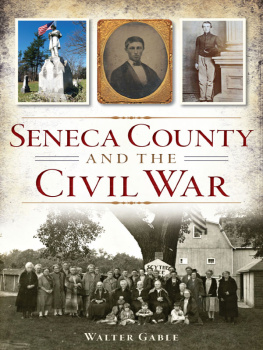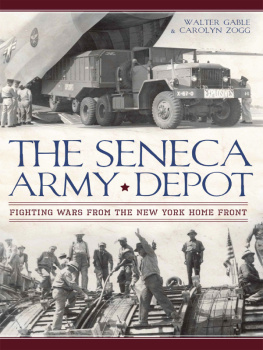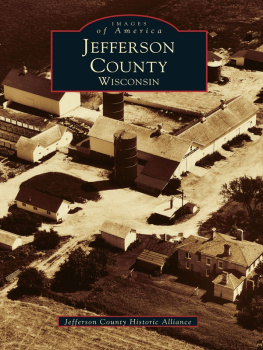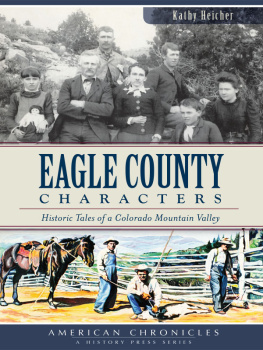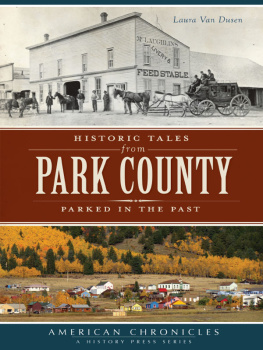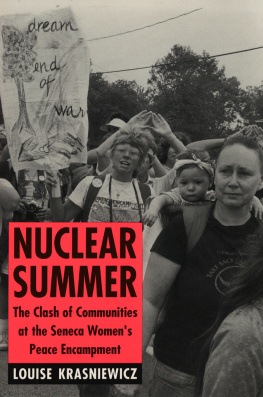Published by The History Press
Charleston, SC
www.historypress.net
Copyright 2017 by Walter Gable
All rights reserved
Front cover, top: Seneca County Historians Office; bottom: Seneca Falls Historical Society.
First published 2017
e-book edition 2017
ISBN 978.1.43966.160.4
Library of Congress Control Number: 2017934928
print edition ISBN 978.1.46713.654.9
Notice: The information in this book is true and complete to the best of our knowledge. It is offered without guarantee on the part of the author or The History Press. The author and The History Press disclaim all liability in connection with the use of this book.
All rights reserved. No part of this book may be reproduced or transmitted in any form whatsoever without prior written permission from the publisher except in the case of brief quotations embodied in critical articles and reviews.
Acknowledgements
This book has become a reality thanks to the assistance and support of many people. The constant encouragement and help from close friends and local historians has sustained me in this endeavor. I mention these in particular: Naomi Brewer, Carolyn Zogg, Philomena Cammuso, Bill Sebring, Allan Buddle, Jane Braunig and Gail Snyder.
This is my third book published by The History Press. Looking back now, I realize how much patience its extremely professional staff had as they guided me through the learning curves of completing my first book, The Seneca Army Depot: Fighting Wars from the New York Home Front. Their expertise and my enhanced understanding of the process made publication of the second book, Seneca County and the Civil War, much easier. Amanda Irle, Rick Delaney and the other staff have made my work on this third book pleasant and almost routine. I am grateful and thankful for that.
The Seneca County Board of Supervisors and several members of the county staff have been instrumental in making my work as the Seneca County historian possible and so enjoyable. Their support is greatly appreciated. They have given me much freedom to choose what topics I pursue for my writing and program presentations.
The late Miss Ethel M. Buckley, my high school history teacher, instilled in me a great love of history. In much of my writing, I am guided by asking myself if Miss Buckley would think my wording is appropriate and would pass the test of being factually correct.
Introduction
I took on the part-time position of Seneca County historian in August 2003, because it was just too intriguing a challenge and opportunity to pass up. I transformed the job, placing emphases on writing about Seneca Countys rich history and presenting programs to schools and community groups. Much of my time was spent on research and writing.
My extensive writing reached a larger audience when it began appearing as articles in local newspapers. The Reveille/Between the Lakes, a weekly publication and one of the official newspapers of county government, began running an article of my choice on a monthly basis. Starting in 2009, I was also producing articles every week for the Tri-Village Pennysaver and every four weeks for the Finger Lakes Times.
It is very typical that, almost anywhere I go locally, someone comes up to me and expresses how much they have enjoyed reading my articles. Several people tell me that they save them. I have also been asked by many people if I am going to compile them into a book. After writing two books rather specific in content for The History PressThe Seneca Army Depot: Fighting Wars from the New York Home Front and Seneca County and the Civil WarI decided that it was time to do a book covering many of the topics about which I have written as the Seneca County historian. These topics include histories of important individuals, businesses and events. They are presented here in no order of chronology or significance. This assortment of topics is reflected in the book titleHistoric Tales of Seneca County, New York.
In preparing this book, it was difficult to determine which articles to include and which not to include. I have written on so many topics that I could do several volumes of Historic Tales of Seneca County, New York. Some of this books chapters cover topics about which I have written for local newspapers. Unlike the newspaper versions, however, the chapters on those topics in this book are unabridged and have source citations.
The first two chapters in this book were obvious choices from a historical standpoint. The first chapter deals with the establishment of Seneca County and its towns. One section of the chapter, Encounters with Wild Animals in the Early 1800s, gives the reader some idea of just how much of a frontier this area was at the time. Another section, History of the Formation of the Various Towns, is especially helpful for readers to understand the changes in the boundary lines of the various towns and of the county as a whole. I frequently get genealogical requests from people who are seeking information about some ancestor, along the lines that some person was believed to be living in one town, then moved to another town and then to still another. But, in many cases, the person didnt move at all! For example, someone living in Romulus in 1794 might not have to move to be recorded as living in the town of Washington in 1803. They might then be documented as living in the town of Junius in 1804, then in Seneca Falls in 1830. Another possibility is that a person living in Romulus in 1794 would, without having moved, be recorded as living in Wayne County in 1824. Such movements were the product of shifting boundary lines as counties were established and altered.
The second chapter deals with the official county seal. Although it is the shortest chapter in the book, it touches on several aspects of the countys history. My book Seneca County and the Civil War devotes full chapters to the Scythe Tree story and to Waterloo as the official birthplace of Memorial Day.
The chapter dealing with Ezra Sutton, who hit the first home run in professional major-league baseball, is the result of some of my most recent research and writing. On January 25, 2016, I was presenting a program on the Seneca Army Depot book at the Galen Historical Society in Clyde, New York. At the conclusion of the program, Jim Darnell asked me what I knew about a baseball player, Ezra Sutton, who was born in Seneca Falls. I didnt even recognize the name, but I soon got to work, researching as much as I could about Sutton. The Internet is such a helpful tool! I even purchased prints of baseball cards of Ezra Sutton. When I found out that he was buried in a cemetery in Palmyra, New York, I contacted Beth Hoad, the Palmyra town historian. She didnt know about Sutton but agreed to take a picture of his gravestone for me. She went on to write an article about Sutton for her series on local history in a Wayne County newspaper. Suttons 1880 contract with the Boston team came up missing from the New York Public Library and then appeared in a collectors auction at Sothebys. I have been unable to verify the current location of that contract, so the chapter does not deal with that controversy.
Many of the chapters touch on favorite topics of mine. In my youth, I was fascinated to see the blades of the Windmill turn and to hear stories about the Kingdom community. I have always been fascinated by cobblestone houses, so it should not be surprising that one of my earliest extensive research efforts as county historian was to start compiling information about the cobblestone houses in Seneca County. The recent movie version of the book




